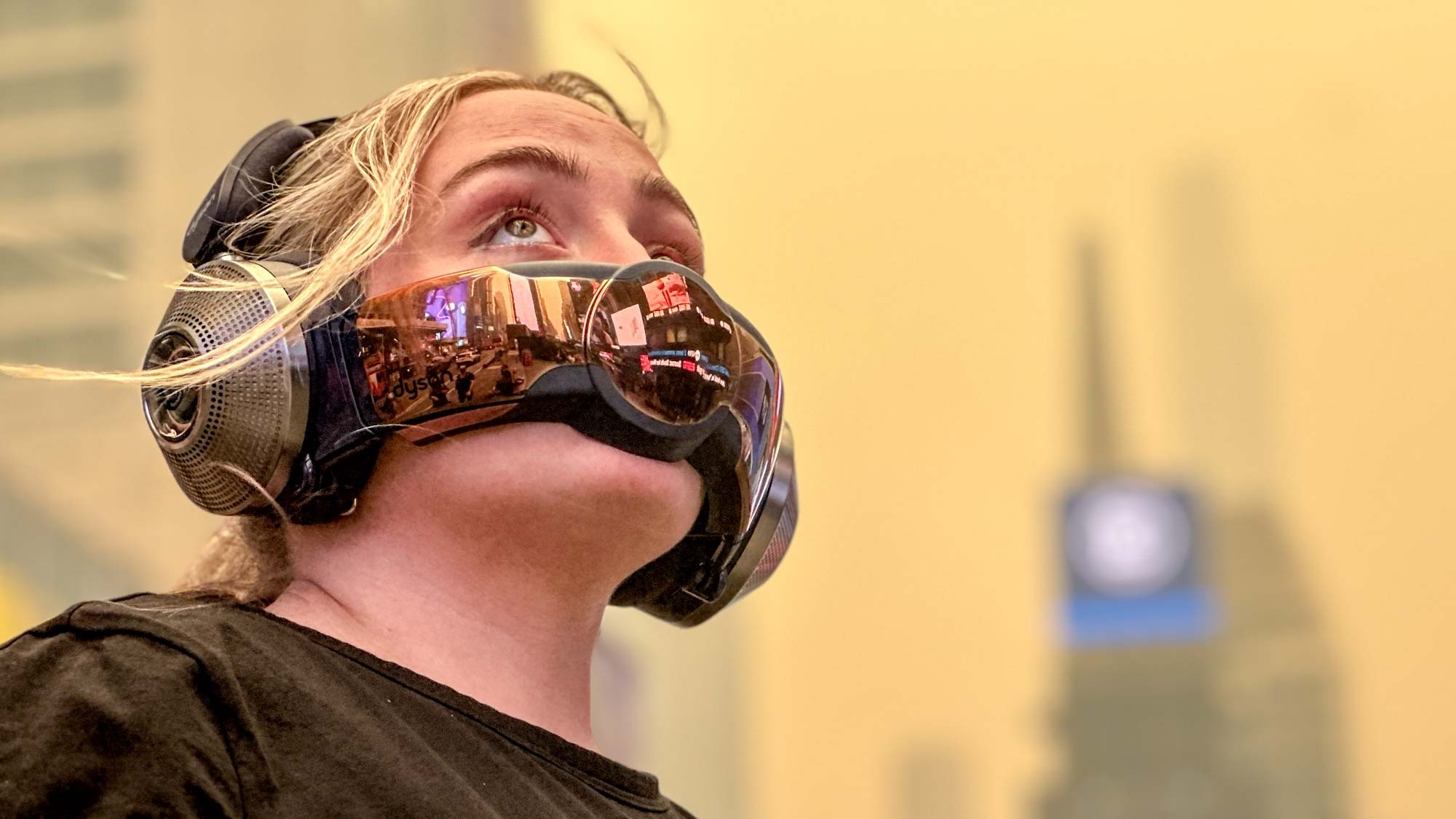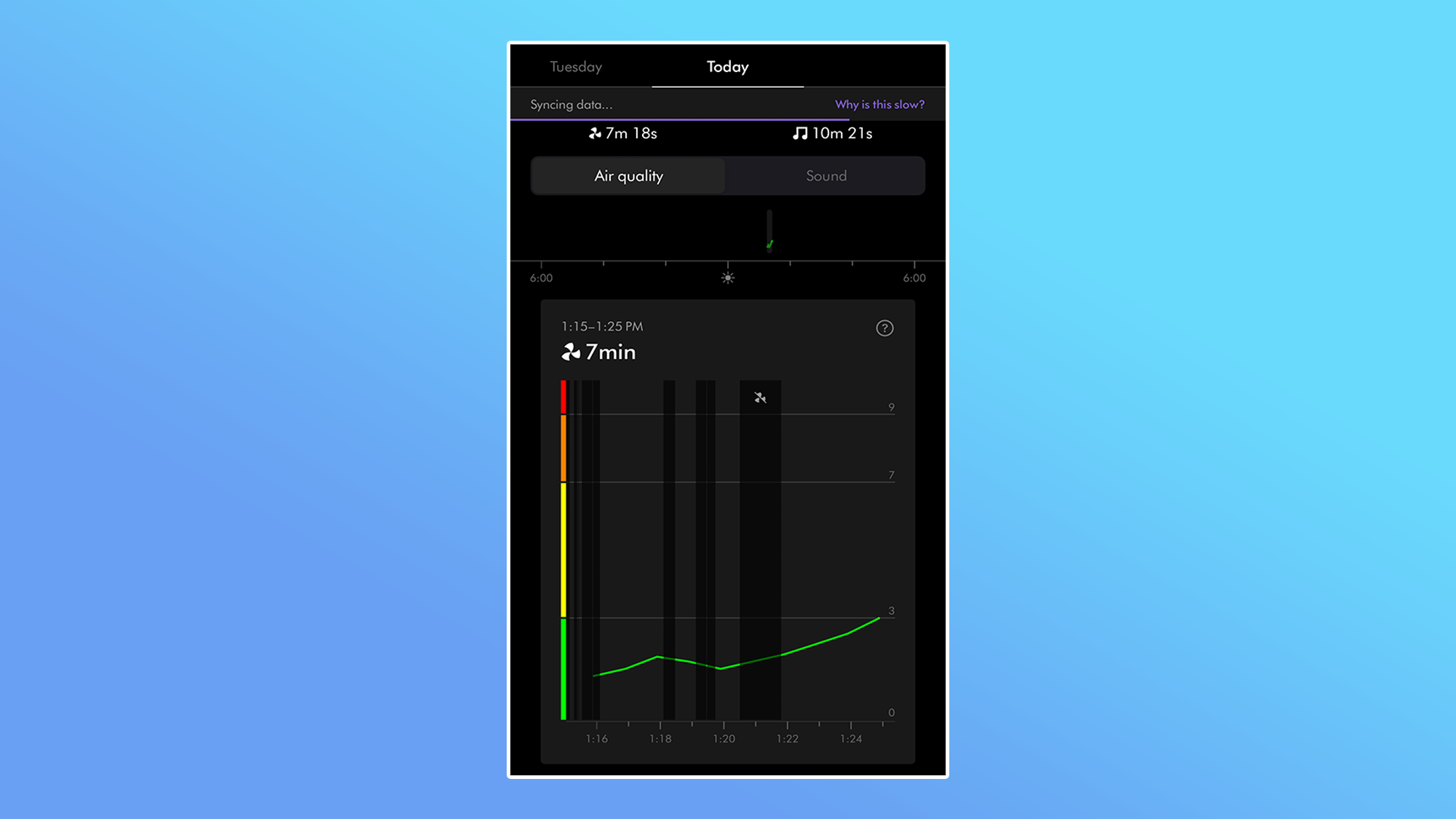I was skeptical of the Dyson Zone — until NYC’s worst air quality ever
I wore the Dyson Zone through some of the worst pollution in the world, here's how it worked

New York City’s air quality is currently among the most dangerous in the world as smoke from Canadian wildfires has laid an orange-colored haze across the parks and skyscrapers. With an alarmingly apocalyptic blanket of smoky air, I’m glad to have found a good use for the Dyson Zone.
The Dyson Zone air-purifying and noise-cancelling headphones didn’t work so great for me when I wore them on a recent cross-country flight. But outside, in an urban area experiencing high AQI readings (with anything over 150 considered unhealthy), I couldn’t get the Zone on my head fast enough.
When powered on, the Dyson Zone’s air purification system feeds filtered air through a magnetically attached visor to the user’s nose and mouth. This meant on my commute to work, I breathed better-quality air than I would have otherwise. Given the circumstances, I felt grateful to have had the device with me as part of an on-going review process.
Now, I must note that the CDC recommends that people stay indoors when there’s smoke in the air, because the ash can irritate your eyes, nose, throat and lungs. But if you do have to go outside in New York, or travel away from home before the air quality worsened like I did, experts have advised people to wear a mask.

The Dyson Zone isn’t equal to a KN95, as it doesn’t claim to filter airborne viruses. But it does offer some defense against air pollutants such as nitrogen dioxide, thanks to a sophisticated air filtration system built into the headset’s ear cups.
I tested the Dyson Zone pre-wildfires, and the nitrogen dioxide levels in the ever-populous Times Square didn’t register much higher than in my office according to the information available in the companion app. Plus, my location-based air quality report said I had nothing to worry about.
But stepping out into the blanket of smoke in New York City, the air quality around me almost registered into Dyson’s yellow or “Fair” range, while the location-based information displayed a dark red banner, indicating "Unhealthy" air quality for my area. Even before I attached my visor, the Dyson app gave me a much-needed warning of what I should be prepared for.
Sign up to get the BEST of Tom's Guide direct to your inbox.
Get instant access to breaking news, the hottest reviews, great deals and helpful tips.
Does the Dyson Zone protect against wildfire smoke?

Dyson doesn’t say whether the Zone headset offers any true and tested protection against air polluted by wildfire smoke, though the product promises to "capture particles as small as 0.1 microns, such as pollen and dust."
My colleagues at Tom's Guide sister website Live Science directed me to this report from UCSF that helps define how an area's AQI is measured. One of the factors is the amount of PM2.5 (particulate matter under 2.5 microns) in the air.
Theoretically, if the particulate matter from wildfire smoke is larger than 0.1 microns, the Dyson Zone should offer protection while air quality is poor. Here is what Dyson senior design manager David Hill said when I reached out to Dyson for clarification:
"Wildfire smoke is comprised of a mixture of gaseous pollutants (e.g., carbon monoxide), hazardous air pollutants (e.g., polycyclic aromatic hydrocarbons), water vapor, and particle pollution. According to the EPA, particle pollution represents a main component of wildfire smoke and the principal public health threat. The Dyson Zone has been tested to capture 99% of particles as small as 0.1 microns that pass through the filters.”
While the Dyson Zone is a very expensive way to filter out airborne particulates, it's nice to know that it looks like it's doing its job in this dystopian environment.
More from Tom's Guide
Kate Kozuch is the managing editor of social and video at Tom’s Guide. She writes about smartwatches, TVs, audio devices, and some cooking appliances, too. Kate appears on Fox News to talk tech trends and runs the Tom's Guide TikTok account, which you should be following if you don't already. When she’s not filming tech videos, you can find her taking up a new sport, mastering the NYT Crossword or channeling her inner celebrity chef.

